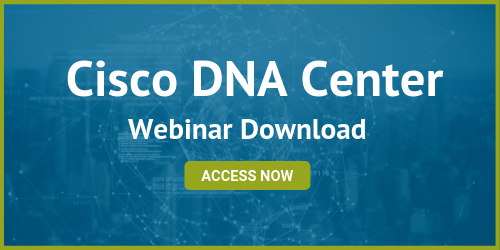
Historically, configuring network switches, firewalls and other infrastructure components was a slow, largely manually process. Generally, a network operator entered configuration changes through the Command Line Interface for each piece of equipment. The old-fashioned approach was inflexible, the installation process was time-consuming, and the deployments were error-prone.
As a result, a bank waited weeks or even months for a branch office network to be set up. Nowadays, companies need to move quickly, so they demand that their IT systems be agile and flexible. SDN and IBN provide companies with a new network foundation.
What are Software Defined Networks?

Introduced several years ago, SDNs take advantage of virtualization technology and logically separate network hardware and software. With this change, network administrators manage, provision, and even break down networks without having to physically touch hardware, switches and network devices. The change improves network programmability, supports automation, and reduces maintenance time and costs. SDNs are used in the data center, with SD-WAN being very popular.
While SDNs have helped many businesses, they have a few limitations. Deploying these systems is complex, often requiring individuals with special skill sets. While some automation is available, network technicians are still needed for the setup work. Also, these networks do not interoperate, so companies may have multiple SDNs rather than one picture of their network resources.
What is Intent-Based Networking?

IBN is designed to address SDN’s limitations. These solutions provide connectivity to network device Application Programming Interfaces (APIs). As a result, network engineers are able to deploy, manage, and troubleshoot network equipment more easily. IBN simplifies network programming by improving network automation and improving abstraction. This approach helps companies create, implement, and improve network agility. An IBN incorporates four elements: translation and validation; automated implementation; awareness of network state; and assurance and dynamic optimization/remediation. An IBN
- Takes inputs from a network engineer,
- Configures a design for the network based upon the intent of the enterprise,
- Validates the design for correctness,
- Deploys the network configuration,
- Continuously ensures that the intent of the system is met,
- Makes changes when necessary.
A programmable network alleviates IT of the burden of completing many daily networking tasks: bandwidth allocation, traffic routing, security policy configuration, and anomaly detection. Companies save time, eliminate human error, and streamline troubleshooting and remediation – increasingly in real time.
Portability and a vendor-agnostic approach are other IBN benefits. Applications developed for one SDN can be easily ported to a different environment.
Rather than competing against one another, SDN and IBN technologies work best when implemented in combination with each other. Cisco has developed a popular IBN solution, Cisco Digital Network Architecture (Cisco DNA) Center. These tools configure devices en masse via a centralized management console in an automated way but set security policies at a granular level. Analytics provide real-time information on network performance and security threats and provide automated paths to remediation.
How do Customers Benefit from IBN?

Businesses gain flexibility. Experts say the new approaches enables IT pros to manage the network as a uniform entity and more easily build new capabilities on top of it. The network becomes a centralized platform that consistently and easily manages infrastructure and applications. With Cisco DNA, one retailer reduced branch network deployment time from years down to months. Previously, with manual configuration, each branch network required about 250 clicks to set up. With network programmability and automation, that shrank to four.
In addition, networks can be programmed in new ways. IT pros receive alerts on or manage policy configurations from an iPhone. That change frees network engineers to monitor the network from whatever location—while remaining informed and able to take action in real time. Another change is a user or administrator can send a simple request — using natural language — to the physical network. For example, an IT administrator can request improved voice quality for its voice-over-IP application, and the network responds.
Automating network configurations introduce fewer errors. Such consistency is especially important for companies, like financial institutions, that must prove to auditors that they have the same firewall policy implemented across all their locations
What Next?
Change is coming. Many businesses want to take advantage of SDN and IBN. As noted, network design is quite complex, so few have the in-house skills needed to conduct a complete evaluation. Where can they turn?
At Acadia Technology Group, we understand the benefits and challenges of deploying and running business networks. We have worked with many enterprises to deploy robust, cost-effective network solutions. Our experienced Cisco engineers will advise you and assist you with implementing a networking solution that works for you. For more information on intent-based networking, contact us today.

chefdro? The Stuff- Bryan Armen Graham: Crash Course: Manny Pacquiao vs
I really like and appreciate your post.Really thank you! Keep writing.
Hi there! I could have sworn I’ve been to this blog before but after browsing through some of the post I realized it’s new to me. Anyhow, I’m definitely delighted I found it and I’ll be book-marking and checking back often!
“Last week I dropped by this site and as usual great content and ideas. Love the lay out and color scheme”
I really love the way you discuss this kind of topic.*.`-.
After study several of the content for your web site now, and i genuinely much like your technique for blogging. I bookmarked it to my bookmark site list and will also be checking back soon. Pls consider my web site too and figure out what you think.
Let me be the queen of ur free adult webcams naughty fantasies!
I don’t think the title of your article matches the content lol. Just kidding, mainly because I had some doubts after reading the article.
If you find someone special, visit a catalog of real presents to surprise a woman
Even if a real cams show can’t invest in a high-tech interactive toy, a good old fashioned dildo is a great choice. It’s as suitable for girls just starting out in their careers as it is for those who already have a solid audience.
… [Trackback]
[…] Find More on that Topic: acadiatech.com/blog/build-sdn-ibn-network/ […]
… [Trackback]
[…] Find More Info here on that Topic: acadiatech.com/blog/build-sdn-ibn-network/ […]